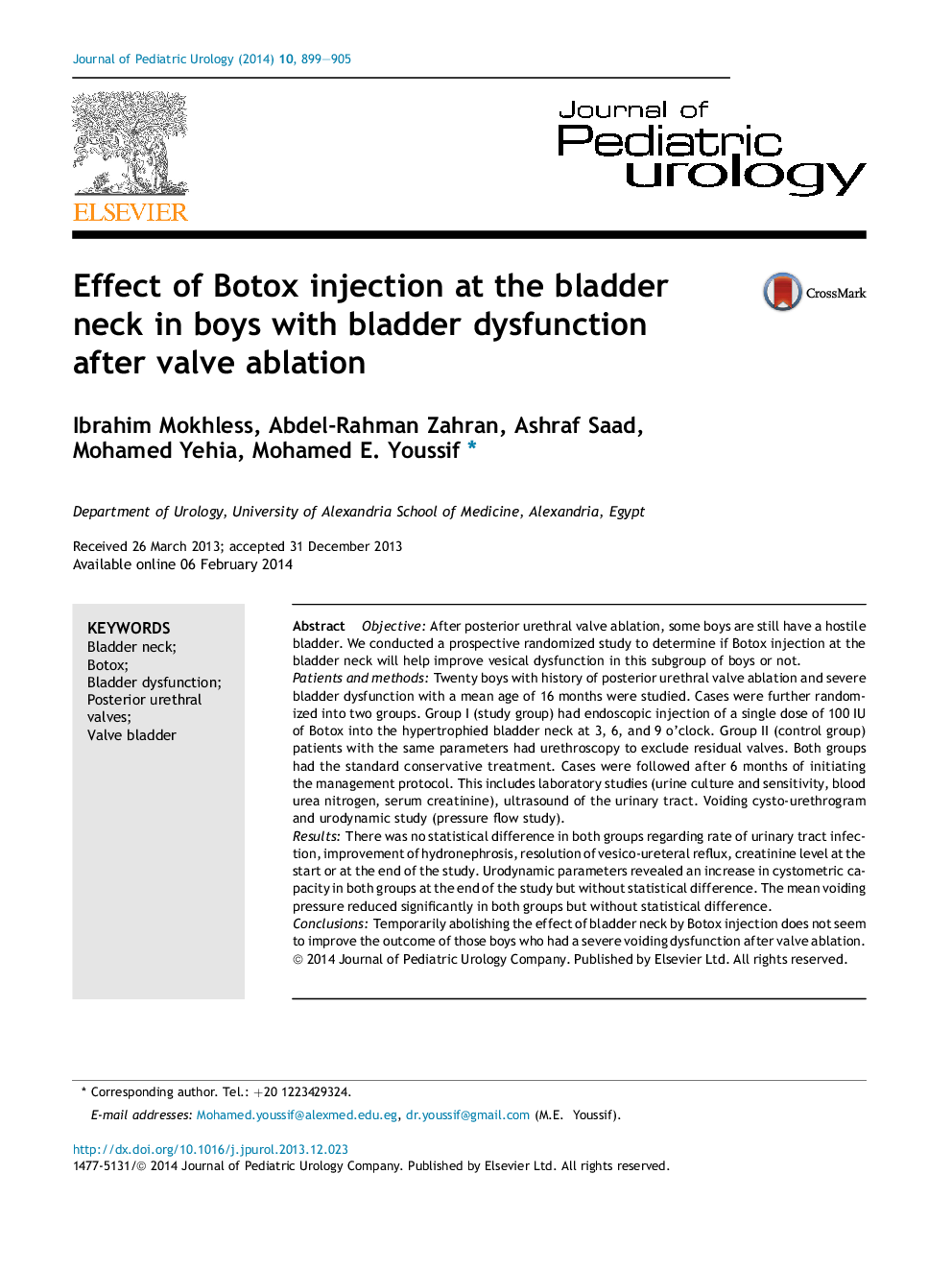| Article ID | Journal | Published Year | Pages | File Type |
|---|---|---|---|---|
| 4162365 | Journal of Pediatric Urology | 2014 | 6 Pages |
ObjectiveAfter posterior urethral valve ablation, some boys are still have a hostile bladder. We conducted a prospective randomized study to determine if Botox injection at the bladder neck will help improve vesical dysfunction in this subgroup of boys or not.Patients and methodsTwenty boys with history of posterior urethral valve ablation and severe bladder dysfunction with a mean age of 16 months were studied. Cases were further randomized into two groups. Group I (study group) had endoscopic injection of a single dose of 100 IU of Botox into the hypertrophied bladder neck at 3, 6, and 9 o’clock. Group II (control group) patients with the same parameters had urethroscopy to exclude residual valves. Both groups had the standard conservative treatment. Cases were followed after 6 months of initiating the management protocol. This includes laboratory studies (urine culture and sensitivity, blood urea nitrogen, serum creatinine), ultrasound of the urinary tract. Voiding cysto-urethrogram and urodynamic study (pressure flow study).ResultsThere was no statistical difference in both groups regarding rate of urinary tract infection, improvement of hydronephrosis, resolution of vesico-ureteral reflux, creatinine level at the start or at the end of the study. Urodynamic parameters revealed an increase in cystometric capacity in both groups at the end of the study but without statistical difference. The mean voiding pressure reduced significantly in both groups but without statistical difference.ConclusionsTemporarily abolishing the effect of bladder neck by Botox injection does not seem to improve the outcome of those boys who had a severe voiding dysfunction after valve ablation.
